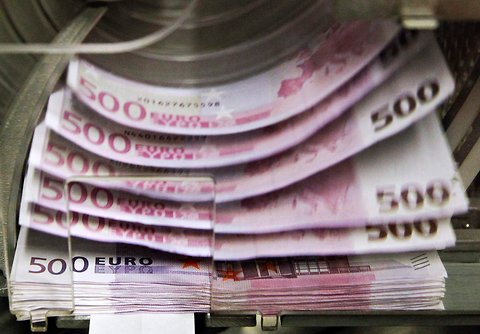Stocks rose on Wall Street on Thursday, with the Standard Poor’s 500-stock index topping the 1,700 level for the first time, after data pointed to a modestly improving global economy and kept afloat expectations for continued support from global central banks.
China’s official purchasing managers’ index for manufacturing rose to 50.3 in July, defying expectations that it would fall and suggesting a rise in activity as growth in new orders increased.
Adding to the optimism, Markit’s purchasing managers’ index for euro zone manufacturing rose to 50.3 in July from 48.8 in June, topping the 50 threshold indicating growth for the first time since July 2011.
But a rival HSBC report on China’s manufacturing was more gloomy, falling to 47.7 in July, the weakest reading since August 2012, which tempered growth expectations.
Both the Bank of England and European Central Bank kept interest rates at 0.5 percent. While the Bank of England opted not to revive its bond-buying program, Mario Draghi, president of the European Central Bank, reiterated that its rates would remain at their present level or lower for an “extended period” of time.
In its latest policy statement on Wednesday, the Federal Reserve gave no hint that a reduction in the pace of its bond-buying program was imminent, as the economy continues to recover but is still in need of support.
“Bottom line, it’s still free money everywhere — whether it is in the U.S., the Bank of England, the E.C.B. — they are all saying the same thing and everyone is kind of loving it,” said Joseph Saluzzi, co-manager of trading at Themis Trading in Chatham, N.J.
In morning trading, the Dow Jones industrial average rose 0.8 percent, the S. P. 500 gained 0.96 percent and the Nasdaq added 1 percent.
Weekly initial jobless claims dropped 19,000, to a seasonally adjusted 326,000, the lowest level since January 2008 and better than the forecast of 345,000, suggesting a steadily improving labor market.
The drop in initial claims, coupled with Wednesday’s better-than-expected ADP employment report, bodes well for payroll data on Friday.
The data provider Markit said its final purchasing managers’ index for manufacturing in the United States rose to 53.7 for July, the highest since March, beating both a preliminary July estimate of 53.2 and the 51.9 reading for June.
The Institute for Supply Management said its index of national factory activity rose to 55.4 in July from 50.9 in June, its highest level since June 2011, topping expectations for 52.
But construction spending dropped 0.6 percent in June, below expectations of a 0.4 percent rise.
The benchmark S. P. index had traded within 10 points of the 1,700 level in the previous 10 sessions, representing a technical resistance level that could lead to more gains if convincingly pierced.
Shares in Procter Gamble, the world’s largest household products maker, rose 2.1 percent, to $81.97, after posting a quarterly profit that fell less than expected. It added that full-year earnings should rise at least as much as last year.
But shares in Exxon Mobil dipped 1.8 percent, to $92.06, after second-quarter profit declined.
The consumer review Web site Yelp surged 19.6 percent, to $49.95 a share, after it posted a smaller-than-expected quarterly loss and forecast third-quarter revenue above analysts’ expectations.
According to Thomson Reuters data through Wednesday morning, of the 331 companies in the S. P. 500 that have reported earnings for the second quarter, 67.7 percent have exceeded analyst expectations.
As earnings season enters its latter stages, 40 companies in the S. P. 500 are expected to report earnings on Thursday, including Kraft Foods.

Article source: http://www.nytimes.com/2013/08/02/business/wall-street-sharply-higher.html?partner=rss&emc=rss



